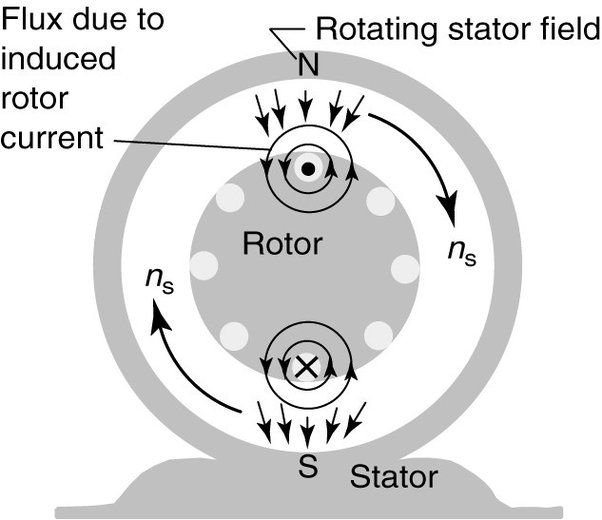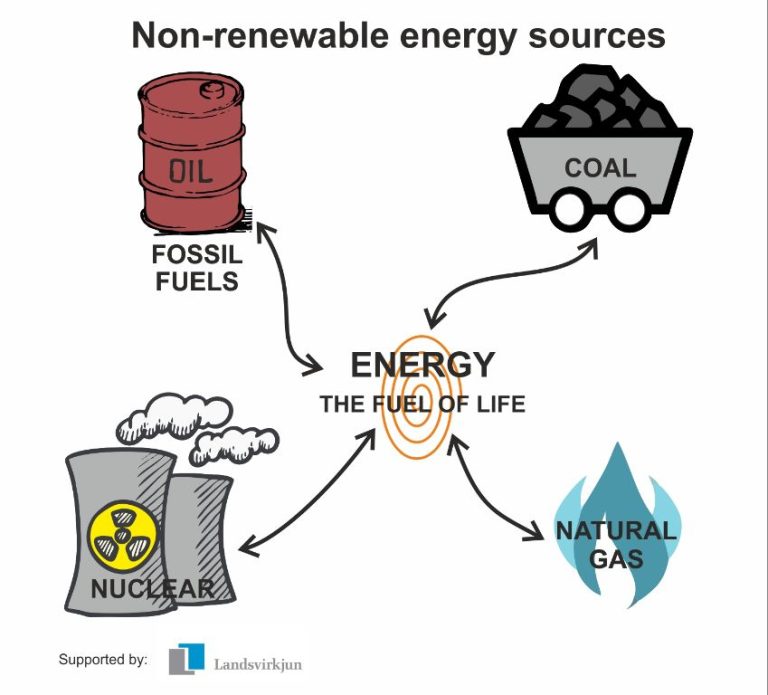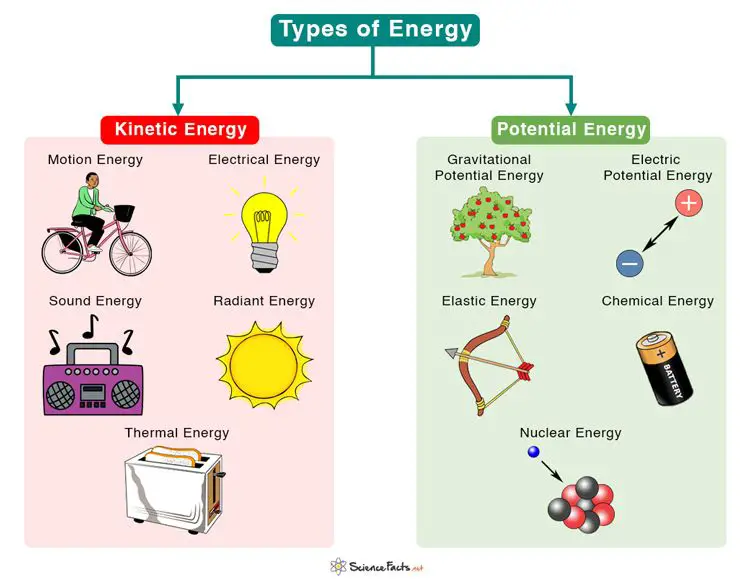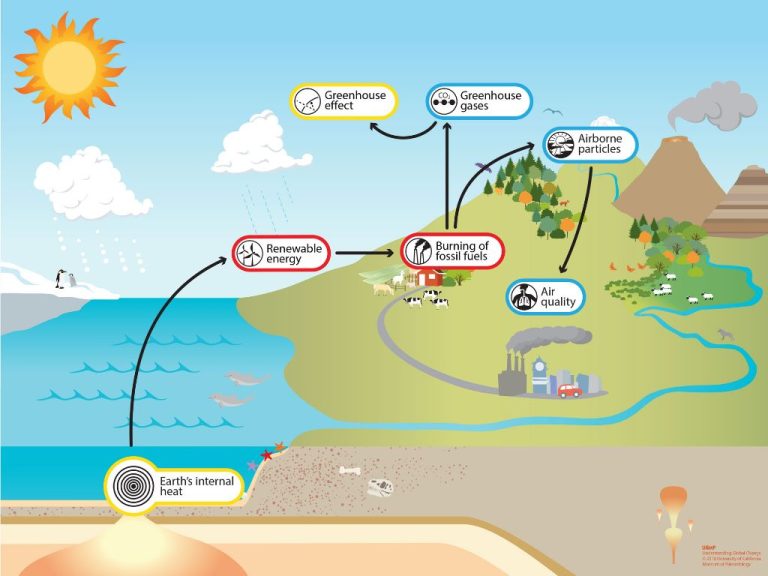What Is Renewable Energy Question And Answer?
What is renewable energy?
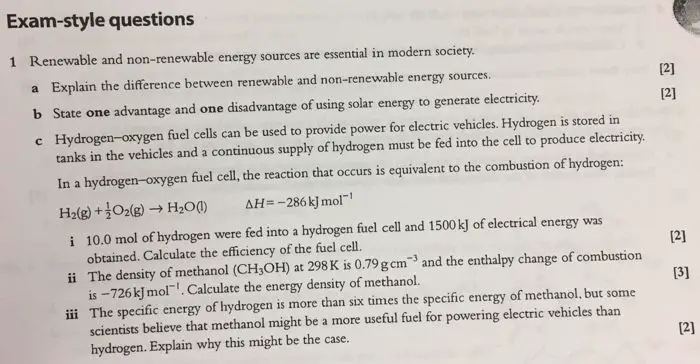
Renewable energy is energy derived from natural sources that are replenished at a higher rate than they are consumed. According to the United Nations, renewable energy comes from natural processes that are constantly replenished. The five main renewable energy sources are:
- Solar energy from the sun
- Wind energy
- Hydro power from flowing water
- Geothermal energy from heat inside the earth
- Biomass from plants and organic waste
These renewable energy sources differ from fossil fuels like coal, oil, and natural gas, which are finite resources that take millions of years to form naturally. Renewables can be used to generate electricity, provide heating/cooling, and power transportation. Using renewable energy over fossil fuels offers environmental benefits like reduced air pollution and carbon emissions.
The most common renewable energy technologies include solar panels, wind turbines, hydroelectric dams, geothermal plants, and biomass facilities. Solar panels convert sunlight into electricity, while wind turbines use wind energy to spin large blades connected to a generator. Dams capture the energy from flowing water to produce hydroelectric power. Geothermal plants tap into underground wells of hot water to create steam that drives a turbine. Biomass facilities burn organic matter like plants, wood, and waste to generate heat and electricity.
Why is renewable energy important?
Renewable energy is important because it helps combat climate change. Most renewable energy comes from natural sources like the sun or wind, and do not emit greenhouse gases that contribute to global warming. According to the EPA, generating energy from renewables reduces greenhouse gas emissions that are driving climate change.1 Using renewable energy can play a major role in reducing the impacts of climate change.
Renewable energy also helps reduce air and water pollution that comes from fossil fuels. Burning coal, oil and natural gas releases particulate matter, nitrogen oxides, sulfur dioxide and mercury into the air, which contribute to smog, acid rain and respiratory problems.2 Increasing renewable energy usage decreases our reliance on fossil fuels and reduces these harmful pollutants.
In addition, renewable energy helps diversify and increase the resiliency of energy supply. Having a diverse mix of renewable sources means not being as affected if one source is temporarily unavailable. Renewables can also support energy independence if locally produced, reducing reliance on imported fuels.2 With many options for renewables like solar, wind, geothermal and more, there are increased energy security benefits.
What are the main types of renewable energy sources?
The main types of renewable energy sources are:
Solar power – This uses energy from the sun to generate electricity through solar panels or to heat water and buildings. Solar energy can be used at both small and large scales. www.nationalgrid.com
Wind power – Wind turbines harness the wind to generate mechanical power or electricity. Wind farms consist of many individual wind turbines and generate power to feed into the grid. Wind power is one of the fastest growing renewable energy sources.
Hydropower – Also called hydroelectric power, this uses flowing or falling water to generate electricity through turbines in hydroelectric dams or run-of-river systems.
Geothermal energy – This taps heat from under the earth’s surface for direct heating or to generate electricity. Sources include hydrothermal reservoirs, hot dry rock, and geothermal heat pumps.
Biomass – Organic plant and animal matter like wood, crops, sewage, and landfill gas can be burned directly for energy or converted to liquid biofuels like ethanol and biodiesel for transportation.
How much of the world’s energy comes from renewables?
Renewable energy accounted for 12.6% of total global energy consumption in 2018, according to the International Energy Agency. This represents steady growth, as the share of renewables has increased from around 9% in 2008. The growth has been driven by increased adoption of technologies like solar and wind power.
According to projections, renewables are poised for continued expansion in the coming decades. The International Energy Agency predicts renewables will supply 30% of global energy demand by 2030 if countries implement their climate pledges under the Paris Agreement. Some experts believe the share could reach 50-70% by 2050 if efforts to decarbonize the energy sector accelerate.
The growth of renewables reflects their increasing economic competitiveness compared to fossil fuels. As technology improves and costs decline, renewable energy is expected to play a larger role in displacing coal, oil, and natural gas in the global energy mix. Countries around the world are investing heavily in renewables to reduce carbon emissions and improve energy security.
What are the advantages of renewable energy?
Renewable energy offers several key advantages over fossil fuel-based energy sources. First, renewable energy is clean and sustainable. Renewable resources like solar, wind, and hydropower produce no air pollution or greenhouse gas emissions during operation. This helps reduce the environmental and public health impacts associated with burning fossil fuels for energy.1
Second, renewable energy reduces reliance on fossil fuels like oil, coal, and natural gas. These fossil fuels are finite resources that could become scarcer and more expensive over time. Using renewables diversifies energy supply and provides a long-term hedge against potential fuel price increases and volatility.2
Finally, renewable energy has become much more cost competitive. Renewables like wind and solar have seen substantial declines in equipment costs thanks to technological advances and scale. In many parts of the world, renewables now offer the lowest cost option for new electricity generation capacity.1 This cost advantage increases energy affordability and price stability.
What are the disadvantages of renewable energy?
Some key disadvantages of renewable energy include:
Intermittency: Many renewable energy sources like solar and wind are intermittent, meaning their energy generation depends on factors like sunlight and wind speed. This can make renewable power unreliable at times compared to conventional baseload power plants.
High upfront costs: The initial investment required for renewable energy systems tends to be higher than for conventional power plants. This includes costs for things like equipment, site preparation, installation and grid connections. EnergySage notes the high upfront costs as a key downside.
Land use challenges: Renewable energy often requires a lot of land area for things like wind farms or solar arrays. This can present zoning, permitting and land use challenges, especially for large scale projects. There are also potential ecosystem impacts from placing renewable energy projects on undeveloped land.
What are some interesting examples of renewable energy use?
Some of the most innovative and large-scale renewable energy projects are currently underway around the world. According to Hive Power, projects to watch include:
– Solaris’ Protevs in Greece, which will be Europe’s largest solar park at 1.2 gigawatts.
– The EU’s REGACE agrivoltaic project, which combines solar power generation with productive agricultural use of land in Italy.
– Repsol’s Delta II offshore wind project off the coast of Spain, which will provide 760 megawatts of power.
Some countries leading the way in renewables adoption include Denmark, Uruguay, Scotland, and Germany. Denmark generates over 40% of its electricity from wind power. Uruguay has met close to 100% of its electricity demand from renewable sources in some months. Scotland generated 90% of its gross electricity consumption from renewables in 2020. And Germany continues to lead globally in total installed solar PV capacity.
What is the future outlook for renewable energy?
The future outlook for renewable energy is one of projected rapid growth, improved technologies, and increased policy support. According to Deloitte’s 2024 renewable energy industry outlook, renewables are expected to continue their strong growth trajectory over the next decade. Key projections include:
– Global renewable energy capacity is forecast to grow at an annual rate of 8.4% from 2022 to 2030, led by solar and wind power expansion.
– By 2024, Deloitte predicts that renewables will account for 30% of global electricity generation capacity, up from 27% in 2021.
– Many major economies have set ambitious renewable energy targets for 2030 and beyond. For example, the EU aims for renewables to comprise 32% of final energy consumption by 2030. The US has targeted carbon-free electricity by 2035.
– Plummeting costs, technology improvements, digitalisation, and supportive policies are driving renewables uptake. The levelized cost of energy for solar and wind has dropped 89% and 70% respectively over the past decade.
– Decentralized and distributed renewables such as rooftop solar, community wind farms, and home batteries will transform power systems. Peer-to-peer energy trading platforms are emerging.
While fossil fuels still dominate and challenges exist, the transition to clean energy continues to accelerate. With supportive policies, cost declines, and tech innovations, renewables have a bright future according to projections.
How can individuals support and use renewable energy?
There are many ways that individuals can support the growth of renewable energy and utilize it in their own lives. Here are some tips:
- Switch your home or business electricity plan to a renewable energy provider. Many utility companies now offer plans where some or all of your electricity comes from renewable sources like wind and solar.
- Install renewable energy systems for your home, like rooftop solar panels or small wind turbines. Tax credits and rebates may be available. Homeowner’s associations sometimes prohibit installations, so check local regulations.
- Invest in green energy stocks or funds. This provides capital for companies developing and expanding renewable energy.
- Buy renewable energy certificates (RECs) to offset non-renewable electricity use. RECs help fund renewable energy projects and are affordable.
- Contact your elected representatives and urge them to enact policies that enable renewable energy growth. Policies like tax incentives, grid access, and favorable regulations are key.
- Buy products from companies committed to 100% renewable operations. Let companies know you value their use of renewable energy.
- Use renewable power at work. Encourage your employer to switch to a green energy provider or install onsite solar.
- Join a renewable energy cooperative or community solar group. Some organizations help members go solar.
- Change your habits to conserve energy. This reduces reliance on non-renewable sources. Simple steps like turning off lights help.
With some effort, individuals can reduce fossil fuel dependence and help accelerate the renewable energy transition.
Overview of key renewable energy resources
Some of the most common and important renewable energy sources include:
- Solar energy – This comes from the sun’s rays and can be harnessed through solar panels and concentrated solar plants. Solar is one of the fastest growing renewable energy sources (U.S. Dept. of Energy).
- Wind energy – Wind turbines convert the kinetic energy of wind into mechanical power. Wind power capacity has expanded rapidly in recent years (U.S. Dept. of Energy).
- Hydropower – Hydropower harnesses the energy of flowing water to generate electricity. It’s one of the oldest and most widely-used forms of renewable energy (United Nations).
- Geothermal energy – This taps heat from the earth’s interior for heating buildings or generating electricity. It provides clean, renewable baseload power (U.S. Dept. of Energy).
- Bioenergy – This covers crops, residues and waste used to produce transportation fuels, generate electricity, or provide heat (U.S. Dept. of Energy).
To learn more about renewable energy, the U.S. Department of Energy and United Nations provide in-depth overviews of each type of renewable resource.


